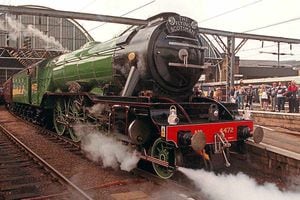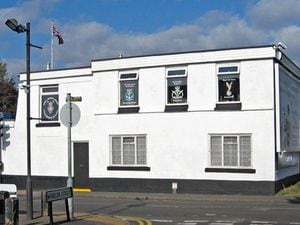Flying Scotsman: Watch 360 video tour inside the classic locomotive
It was the first train to reach 100mph and broke two world records before running out of steam with the arrival of the diesel engine. But, by then, it was already a national treasure.

Flying Scotsman was named after the daily London to Edinburgh service which had linked the two capital cities since 1862.
At 10am each day, two trains set off, one from London Kings Cross Station going north and the other from Edinburgh Waverley going south, passing each other roughly halfway.
The service was called the Special Scotch Express but it was nicknamed the Scotchman or the Flying Scotchman.
When a new A1 class of engine, designed by Sir Nigel Gresley, was built in Doncaster in 1923 for the new London & North Eastern Railway (LNER), it was given the official title of Flying Scotsman to publicise the route.
A year later, the name and the locomotive went global after it was put on display at the British Empire Exhibition in London, seen by more than 20 million people, including the youthful Alan Pegler who was later to buy her.
The journey took 10 and a half hours, including a 30-minute stop at York, where passengers would take lunch.
But, in 1928, a new type of tender was installed with a corridor that linked it with the first carriage, meaning a fresh crew could take over halfway through the journey without stopping the train.
On May 1, the first ever non-stop London to Edinburgh service was launched, reducing the journey time to eight hours. The 392.7 mile run was by a wide margin the longest non-stop railway journey in the world.
The much-admired locomotive lived up to its crack reputation in 1934 by clocking up a speed of 100mph on a special test run, officially the first in the UK to have reached that speed although it was claimed by some that the City of Truro, owned by the Great Western Railway, had reached 102mph on a downhill stretch in 1904.
During the Second World War, LNER sponsored two Spitfires named Flying Scotsman, one of many examples of positive PR by the rail company. The British Empire Exhibition had made the locomotive famous, and LNER took full commercial advantage.
The train even took a leading role in the first British talkie movie, the Flying Scotsman, starring Ray Milland, although everyone knew the train was the real star.
During the war, the Scotsman underwent the first of several colour changes. From LNER apple green, it was repainted black, like all railway stock in this period, in order to avoid detection by overhead bombers. It returned to green when the conflict was over, followed by blue and then a darker British Rail green when train travel in Britain was nationalised in 1948.
During the war, the Scotsman carried troops between London and Scotland, although the headboards and roofboards were removed for security. She carried heavier loads and was worked harder with less maintenance.
During the 1950s, the loco began pulling passenger carriages between Nottingham and London. By the following decade, steam engines had started to fall out of fashion as developments in locomotive technology produced faster and cleaner trains.
Flying Scotsman was given a retirement date, and it pulled its last scheduled run on January 14, 1963, marking the end of almost 40 years of pulling commercial, scheduled trains, including two million miles in British Rail ownership. Huge crowds turned out to see its last run.
Stories emerged that it was going to be scrapped, prompting avid railway enthusiast Pegler to step in and save it.
He estimated that with the Flying Scotsman's record-breaking history, it would still attract a lot of attention, even in retirement. So he bought the engine, restored it to its 1930s condition, and in 1969 took it on a high-profile tour of the United States.
After running out of money, Pegler was later forced to file for bankruptcy and the locomotive became stranded in America.
A rescue package to return the Scotsman to the UK was organised by construction boss William McAlpine, now the new owner of the engine. An estimated 100,000 watched it steam from Liverpool to Derby for overhaul.
Before long it was back on the big screen again, this time Agatha alongside Vanessa Redgrave and Dustin Hoffman.
Its new owner organised for Flying Scotsman to take a tour round Australia here it broke the world non-stop steam record of 442 miles, a journey that included the 297 miles of straight track, the world's longest 'straight.'
In the mid-1990s, pop impressario and steam train fanatic Pete Waterman briefly owned a half-share in the engine but he found the purchase financially draining and reluctantly he and business partner McAlpine sold the loco.
In the years running up to this deal, the engine had deteriorated but wealthy business owner Tony Marchington paid for an overhaul which took four years, far more than expected.
The ageing A3-class train cost him millions and forced him into bankruptcy.
The locomotive was put up for sale and in 2004 a Save Our Scotsman campaign helped raise the £2.5 million purchase price for the National Railway Museum. The public's contribution of £415,000 was matched by Sir Richard Branson and a further £1.8m was given by The National Heritage Memorial Fund. The magnificent locomotive has now undergone a further lengthy and costly restoration.





